WHAT'S NEW?
Articles and Pages Recently Added to the Site
 “Whispers of Wisdom - Thoughts for Grandparents’ Day”
“Whispers of Wisdom - Thoughts for Grandparents’ Day”
A story that “illustrates how the influence of grandparents, their wisdom and their connection to nature and science, can shape and nurture a child’s curiosity and guide them towards a fulfilling and innovative career in the scientific field,” is how some thoughts about Grandparents’ Day (the first Sunday after Labor Day in the U.S.) were described by ChatGTP artificial intelligence after it generated a story to celebrate the day. The resulting article not only recognises how the guidance of grandparents can affect a child’s career choice, but also showcases the innovative plot created by AI. (10 Sep 2023)
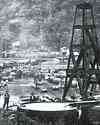 “Oil Fountains of Pennsylvania” (1860)
“Oil Fountains of Pennsylvania” (1860)
Pumping the first oil from the ground in the U.S. began at Titusville, Pennsylvania. It became the “oilporium” region, and the town experienced massive growth within a few months. Letters sent to the N.Y. Evening Post at that time give a contemporary description of the excitement and the practicalities of handling the petroleum. The author predicted it would mean the end of the use of whale oil for illumination, which he said meant “A Good Time Coming For Whales”. Because this is an account written as it was all happening, it makes interesting reading. (14 Jul 2018)
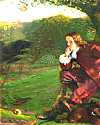 “Sir Isaac Newton’s Apple Tree” by John Timbs
“Sir Isaac Newton’s Apple Tree” by John Timbs
The myth of Isaac Newton and his inspiration on seeing a falling apple has long been told. But it was debunked as a fiction at least as early as 150 years ago. John Timbs gives the details of what is actually known, in Historic Ninepins: A Book of Curiosities (1869). He writes about Sir David Brewster’s presentation to the British Association, pretty much showing that the story was “a gigantic fraud—the greatest ever attempted in the world as connected with science and literature.” (19 Nov 2018)
 “Professor Croftly’s Crime” by Sam Davis
“Professor Croftly’s Crime” by Sam Davis
A whimsical 19th-century short story from a newspaper (1879), subtitled “The Explanation of an Old California Murder Brought to Light After Many Years—An Invention Which Proved the Death of the Inventor.” It may have looked like an article, but it was fiction, as shown by the liberties taken in the plot concerning instant refrigeration, battery power (in “omes”) and odorless ammonia (!). Reading this story as a scientist will cause more than a bit of amusement. (29 Jun 2016)
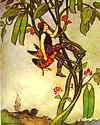 “The Logic of Elfland” by G.K. Chesterton
“The Logic of Elfland” by G.K. Chesterton
Chesterton reflects on deductive versus inductive logic, imagination and the scientific law in the witty and alliterative style for which he is known, in this excerpt from Orthodoxy (1908). He muses on the magic and imagination in fairy tales and contrasts it with the fundamental logic applied by mathematicians, and by scientists investigating the laws of Nature. (14 Mar 2015)
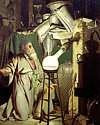 The Origin of the Word “Chemistry”
The Origin of the Word “Chemistry”
Did you know the word “chemistry” may have a connection to the black sand in ancient Egypt? Or, it may come from a Greek word. Nobody can be totally sure, but it's origins are ancient, and chemistry comes to us from centuries of the alchemists. To read more than you would have realized, about considering the origin of the word, read this article from The National Druggist (1919). (26 Oct 2013)
 The First Paid Marconigram
The First Paid Marconigram
At the end of the nineteeth century, Guglielmo Marconi was making radio communication a practical reality. In an article he wrote in 1902, he described how the first paid messages using his wireless telegraphy came about. The payment was made by Lord Kelvin, by his own insistence, for several telegrams to his colleagues, after being shown the apparatus on a visit to the inventor's station. The transmitter was on the Isle of Wight, and the receiver about 20 miles away on the mainland. You can read an account of the circumstances in Marconi's own words in the article. You may be surprised to learn that Kelvin was accompanied for the visit in Jun 1898 by the Poet Laureate, Lord Tennyson. (2 Apr 2013)
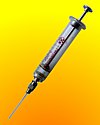 The Use Of Scopolamine In Criminology
The Use Of Scopolamine In Criminology
In the 1920s, Dr. Robert House convinced himself that scopolamine hydrobromide could be used as a “truth serum”. Then he set out to convince others that it would be a fine tool in criminology to obtain information from suspects who, under its influence, would answer questions without being able to lie. In this article, which he read to a Medical Association meeting in 1922, you can learn of his enthusiasm for the technique. At the end of the article there are further links to short newspaper reports of its use to “solve” crimes. In reality, despite a spurt of interest, the truth serum was more effective for writers of crime fiction than in fact. (15 Feb 2013)
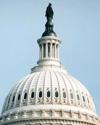 The “Dancing” Statue on the U.S. Capitol Dome
The “Dancing” Statue on the U.S. Capitol Dome
Here is an example of a thermal expansion effect that is perhaps more interesting than a science student learns concerning bridges and rail tracks. The iconic U.S. Capitol Dome is topped by the 19½-ft bronze Statue of Freedom. The 96-ft diameter dome is built of cast iron, subject to unequal thermal expansion during the day as the sun shines on it from different directions. Accordingly, the statue moves in a daily “dance” as its pedestal shifts. In this short article from The Science Record (1875), you can read how the architect, Edward Clark, anticipated and calculated the effect of thermal expansion. (2 Feb 2013)
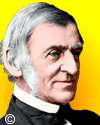 Origin of “Build a Better Mousetrap” Quotation
Origin of “Build a Better Mousetrap” Quotation
It's a quotation every remembers about invention briefly stated something like “Build a better mousetrap and the world will beat a path to your door.” It is now generally accepted that the source was Ralph Waldo Emerson. Yet, there is nothing in his writings with the wording usually quoted. However, there was a lady at one of his lectures, who wrote down an interesting record in her notebook. When in 1911 there began a widely-publicized search for documentation, she came forward. The Docket issue of February 1912 has an interesting story about the history around this quote. (16 Jan 2013)
 Five Fingers of the Scientific Method
Five Fingers of the Scientific Method
In the 1920s, Dr. Glenn Frank, an eminent social scientist developed a new statement of the scientific code, which has been referred to as the “Five Fingers of the Scientific Method.” In this excerpt from “Scientists and Society” by E.M. Hildebrand you can read a brief summary of Frank's five F's which include two steps toward taking a social responsibility for the proper application of a discovery to everyday life. (22 Dec 2012)
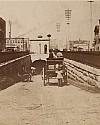 First U.S. Traffic Tunnel Under a River
First U.S. Traffic Tunnel Under a River
The first tunnel under a navigable waterway was built by Marc Brunel under the River Thames in London. The work was difficult, dangerous, and took decades. When Chicago faced traffic jams at the Chicago River drawbridges due to increasing river traffic, the solution was to build the first American under-river traffic tunnel at Washington Street. The cut and cover technique took less effort, but required building coffer dams to hold back the river, and needed pumping equipment to drain them. This article written in the year it opened (1869) includes a description of the use of a steam vacuum pump which is notable because it uses a technology that traces back to Thomas Savery's invention to drain mines nearly two centuries earlier. The author gives a simple calculation of its efficiency, which should interest a physics or engineering student at high-school or university. (11 Dec 2012)
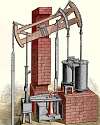 Jonathan Hornblower - Compound Steam Engine
Jonathan Hornblower - Compound Steam Engine
The first compound steam engine was invented by Jonathan Carter Hornblower. By using a system of two cylinders, where exhaust steam from the first powered the second cyclinder, he may have hoped to evade James Watt's lucrative steam engine patent. Robert Stuart included his description and criticism of Hornblower's invention in his Descriptive History Of The Steam Engine which can be read in this excerpt with a diagram of its operation. (5 Dec 2012)
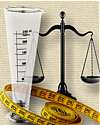 A Century-old Plea to Adopt the Metric System across the U.S.
A Century-old Plea to Adopt the Metric System across the U.S.
When Walter Le Conte Stevens wrote an article in The Popular Science Magazine in 1904, the metric system had already been adopted as the national standard throughout much of the world. He gives a short history of the various measurements used since antiquity, and compares the success of Thomas Jefferson's recommendation for a decimal currency in the U.S. with the lack of progress in the nation's use of metric units. He wonders The Metric System: Shall It Be Compulsory? In over a century, nothing much has changed, except America is remains out of step with almost the whole world. (28 Nov 2012)
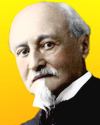 A Turning Point in Aeronautics
A Turning Point in Aeronautics
When Octave Chanute wrote on the state of “Aerial Navigation” in 1904, the Wright brothers had only just made the first powered aircraft flight. In this article, Chanute summarizes the progress of aviation to that crucial turning point in the history of aeronautics. He gives an intriguing snapshot in time, because much of his article reviews the development of balloons, reflecting how the full importance of the Wright brothers' achievement was not yet fully appreciated. Development of practical aircraft was about to take off. (27 Nov 2012)
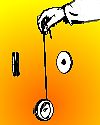 Chimborazo! The Yo-yo
Chimborazo! The Yo-yo
What do a yo-yo, a silk panel hanging from a trumpet, and a quiz have in common? What started as a routine look over an entry on this website for the first U.S. patent issued for a yo-yo design, led to finding the intriguing background that answers that question. In this Chimborazo share your Webmaster's exploration of that began with the yo-yo, but wandered into a story in a Charles Dicken's magazine about Prince Astolfo's bandelore, a legend about a bet in Dublin, a new meaning for the word “quiz” and ancient Greek art. (21 Nov 2012)
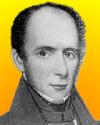 John B. Jervis - Antebellum American Civil Engineer
John B. Jervis - Antebellum American Civil Engineer
John B. Jervis is probably a name unknown to most people nowadays, yet he deserves your time because it is interesting to learn of his productive life. He was an American civil engineer who became the nation's leading consulting engineer of his time. In the period (1830-60) before the Civil War, he worked on several significant canal projects, railroads and water-supply systems. This obituary from Proceedings of the American Society of Civil Engineers (1885) reveals a lifetime of significant contributions to the expansion of American infrastructure. (20 Nov 2012)
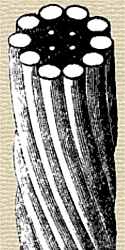 The English Channel Telegraph Cable
The English Channel Telegraph Cable
The first practical submarine telegraph cable was laid across the English Channel in 1852. (An earlier one with poor insulation quickly failed, but lasted long enough to prove a functional signal could be carried). This enterprise set the stage a few years later for the ambitious trans-Atlantic telegraph cable. Thus, the first practical cable across 20 miles of the English Channel was the start of the Victorian internet, with submarine telegraph cables laid around the globe, bringing near instant communication between the outlying reaches of the British Commonwealth and the world. This short excerpt from The Electric Telegraph: Its History and Progress (1852) gives some background on the successful construction of the cable, the method used to lay it, an unusual benefit, and its cost at that time. (15 Nov 2012)
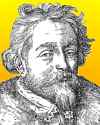 The Origin of the Submarine
The Origin of the Submarine
Remarkably, the first submarine trial is documented from about the 1620s. Little is known about the vessel invented by Dutchman Cornelis Drebbel, but information about the person and his ingenuity was recorded first by Mersenni and repeated by John Wilkins. It seems Drebbel even had an understanding of the composition of the air, long before oxygen was even identified, and how to replenish the necessary part of the air in the confines of the closed submarine. This article summarizing Drebbel's work comes from Blackwood's Magazine (1917). (8 Nov 2012)
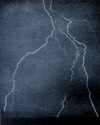 Franklin's Kite Experiment With Modern Apparatus
Franklin's Kite Experiment With Modern Apparatus
In another article by metereologist Alexander McAdie, you can see how he becomes an heir to Benjamin Franklin's atmospheric investigations as he describes his own activities with kites wired to the more advanced electrometers of the 19th century. This article comes from Popular Science (Oct 1897). (25 Oct 2012)
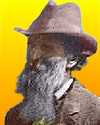 Muir of the Mountains
Muir of the Mountains
In a memorial issue of the Sierra Club Bulletin (Jan 1916) commemorating John Muir, an article was contributed by metereologist Alexander McAdie, who had spent some years as vice-president of the society. John Muir was the first president of the club. McAdie wrote about his reminiscences where they shared interests in earthquakes, mountain terrain and physical processes. (20 Oct 2012)
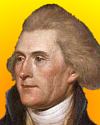 Jefferson as a Man of Science
Jefferson as a Man of Science
His fame as the writer of the U.S. Declaration of Independance first comes to mind when thinking of Thomas Jefferson, but he was also a man that took interest in a wide field of sciences. He published a book, Notes on Virginia which was called was the first comprehensive treatise upon the topography, natural history and natural resources of an American state. His interest in agriculture yielded his invention of a new, mathematically designed plow. To learn more of Jefferson's science interests, read this Preface from a volume of his papers. (11 Oct 2012)
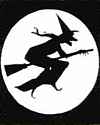 Some Chemistry in the Science of Halloween Last Century
Some Chemistry in the Science of Halloween Last Century
Some chemistry was used for Halloween a century ago, according to an article “Mechanical Halloween Tricks” in Popular Science magazine (Oct 1918). Although the writer actually spends little time on science, and mostly on decorations, it is worth reading for the mention of the same enduring customs of Halloween back then. But there is also one interesting reference to chemistry to reward a quick look in this article. (8 Oct 2012)
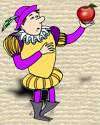 Did Shakespeare Anticipate Newton on Gravitation?
Did Shakespeare Anticipate Newton on Gravitation?
Like the examples in Poets' and Novelists' Anticipations of Science below there are quotes from William Shakespeare which seem to indicate he understood the effects of Earth's gravity. After this was remarked in an edition of the magazine Pall Mall, it was followed by a response in The Galaxy magazine (Dec 1867), giving this rebuttal. (5 Oct 2012)
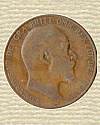 How Was It Made a Century Ago - Money
How Was It Made a Century Ago - Money
Coins have been minted for millenia. How they were made by the Royal Mint over a century ago is the first subject of a 1907 book, How It Is Made. The technology described was no doubt from the Victorian era, but when the book was published, it was King Edward VII on the throne, and his head was on the coins then being produced in London at the Royal Mint. You can see several photographs of the machines of the era, and read how they made the coins, in this chapter. (3 Oct 2012)
 Astronomic Grandeur
Astronomic Grandeur
After making a slight revision to 'The Friendly Rocks,' an essay from John Burrough's enchanting 1916 natural history book, Under the Apple-trees, I realised how much I enjoyed reading it again. As an author, he did much to nurture the fledgling conservation movement. So, I've added another excerpt from that book. From the chapter 'Great Questions in Little,' as well as his thoughts about Astronomic Grandeur, he wrote short sections on several topics about science, including: Why and How; Limitations of Science; Beginnings; and finally, more reflections on Evolution, in this excerpt. (3 Oct 2012)
 The History of the Propeller Beanie and the Ultimate Propeller-Head
The History of the Propeller Beanie and the Ultimate Propeller-Head
The propeller beanie, now recognized as a geek icon, has an interesting history of which you may not be aware. Read about it in this illustrated article, which concludes with a nomination for Hermann W. Williams as perhaps the Ultimate Propeller Head Geek. See if you agree after viewing diagrams of his OMG invention at the end of this article. (28 Sep 2012)
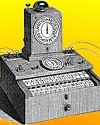 Poets' and Novelists' Anticipations of Science
Poets' and Novelists' Anticipations of Science
In an article “Anticipations” from The Spectator (1902) you can read some examples of how poets and novelists have anticipated the triumphs of later science. Of course, the quotes have been cherry-picked from a vast body of literature, but they do make interesting reading to see how their authors each seem to have unknowingly stumbled on a scientific truth years ahead of its time. Read for yourself in this article. (25 Sep 2012)
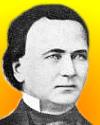 Who Invented the Sewing Machine?
Who Invented the Sewing Machine?
Walter Hunt is a footnote in the history of the invention of the practical sewing machine. Yet he had support in this 1867 article “Who Invented Sewing-Machines” in The Galaxy Magazine as being more significant than Elias Howe who did earn his fame. Patent disputes are in the news headlines now, but that has been going on for a long time, as you can see in this article. (24 Sep 2012)
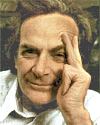 Richard Feynman on the French Curve - A Reflection on “Thinking Inside the Box”
Richard Feynman on the French Curve - A Reflection on “Thinking Inside the Box”
Richard Feynman, the Nobel Prize-winning physicist, was adept at “thinking outside the box” but also in his book, Surely You're Joking, Mr. Feyman, he prods us to be more familiar with - and make better use of - what we already know. Read more. (5 Sep 2012)




